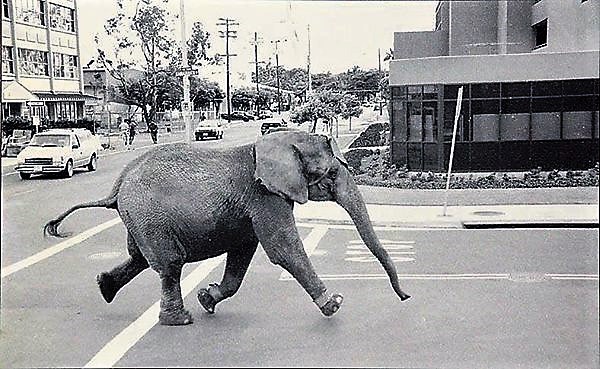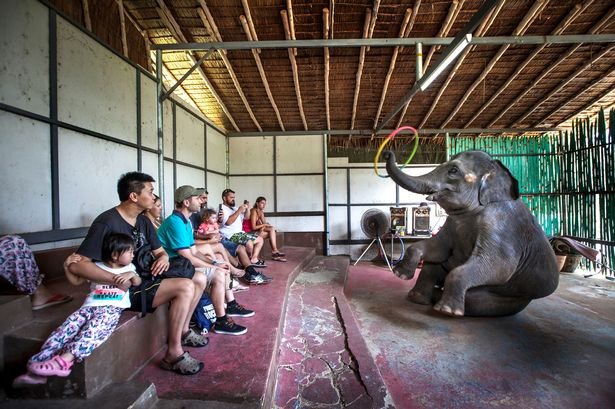Post updated 28 March 2023
On the 20th August 1994 an elephant named Tyke was about to enter the arena at the Circus International in Honolulu, Hawaii when she turned on her groom, a young lad named Dallas Beckwith, and trampled him to death.
This was not the first time she had tried to get away from her awful life as a performing circus elephant. A year earlier she had escaped for an hour during a performance in Pennsylvania attacking a tiger trainer and then in North Dakota ran amok at the State fair stepping on a handler.
Many in the audience on this fateful day in Hawaii thought the limp dummy like body of Dallas Beckwith being kicked around the floor was part of the show. Allen Campbell, her allegedly cruel trainer, tried to intervene and was also crushed and killed.
Shot 87 times by the Police before she finally died.
Tyke then made a bid for freedom and bolted from the arena, injuring many spectators as she tried to find a way out, enraged and distressed from all the noise and pandemonium she was causing. She ran through a street of the Kakaako business district during the rush hour for over half an hour, nearly trampling the circus promoter Steve Hirano when he tried to corral her.
She was soon chased by armed police, who fearing for the safety of trapped onlookers, fired at her. Hundreds of tearful onlookers watched in horror as she was shot 87 times with small calibre bullets until she finally staggered and collapsed to slowly die from nerve damage and brain haemorrhages.

Tyke’s death was emblematic of circus tragedies and a symbol of animal rights.
She was only twenty years old. After the incident in Hawaii, Tyke unsurprisingly became emblematic of circus tragedies and a symbol of animal rights. This tragic incident should have spelled the end to the use of wild animals in circuses, but there was no such legacy. Almost 25 years on, as always, nothing has changed, and circus elephants and other wild animal species are still being used around the world and often going “rogue” as many people like to call it.
Animal circuses are still inexplicably popular in North America and parts of Europe, South America and Asia. Circuses are actually booming in the USA and Canada, where only a handful of towns or municipalities ban them.
England as always lagged behind banning circuses.
19 countries have banned the use of wild animals in circuses including 12 in Europe. Scotland banned their use in December 2017, the Republic of Ireland in January2019 along with Wales, but Northern Ireland has no plans. Good old England, the nation of animal lovers, lagged behind and only imposed a ban on wild animals in January 2020. This was mainly due to misplaced patronage by some MP’s quoted as stating that the circus is a ‘Great British institution that deserves to be defended against the propaganda and exaggerations’.
Hawaii finally banned circuses in 2018.


